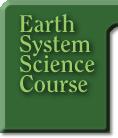Assessment
Overview
Final Project
Assignment & Rubric—Individual
Weeks
16
Goal:
To do an individual final project.
You must
complete the final project even if you don't need the points
to get an A in the course.
Background:
Your Final Project has two parts. For the first part, you will
review the Volcano Scenario and the responses you posted in
Week 2 and the volcano samples provided for you in Week 3. Then,
using the Volcano Scenario and building from your responses,
the samples, and most importantly a problem statement, you will
individually complete PBL Steps 7 and 8, just like you did in
the team Week B: Teacher as Model Builder assignment. The difference
now, however, is that you will complete these steps by yourself
instead of with your team.
The focus
of this assignment is to build the ESS model that will support
the ideas and conclusions you reach concerning the problem statement
(PBL Step 6) that guides your information search. For this
assignment you may use or revise the problem statement that you and your
team developed from the Volcano Scenario in Week 2. Other options
are for you to use or revise the problem statement provided
for you in the volcano sample or to write a new one.
As you
do this assignment, you need to think in terms of an iterative,
or repeating, process regarding the gathering of information
(PBL Step7) as you move toward your findings (PBL Step 8). This
assignment will be assessed according to the ESS Model-Building
Rubric, so you may want to refer to it while you are doing your
assignment.
For the
second part of your Final Project, you will do the Reflective
Learner Assignment for volcanoes to see how your learning has
evolved. This assignment will be assessed according to the Reflective
Learner Rubric, so you may want to refer to it while you are
doing your assignment.
Use the
directions below to complete your final project.
|
Assignment
(by midnight Sunday)
Part
I
1.
Review the Volcano Scenario, the responses you posted in Week 2, and the volcano
samples provided for you in Week
3. To review your Week 2 responses, go to the Classroom,
then click on Volcanoes and locate your posting for the
week.
2.
Find your problem statement, then continue gathering information
to answer your questions with evidence from experience,
research, and reading to support or refute your ideas.
You will gather, organize, analyze, and interpret information
from multiple sources. Examine ideas; think about solutions;
weigh alternatives; and consider the pros and cons of
potential courses of action (PBL Step 7). As new information
comes to light, analyze it for its reliability and usefulness
and also for its impact on the direction that the problem
is taking, as well as for its effect on the very nature
of the problem. Therefore, you may need to revise or modify
your problem statement (PBL Step 6).
Posting
Instructions for step 3
Go
to the Classroom. Then click on
Journal Space. |
3.
Then, using the Volcano Scenario and building from your
responses, the samples, and most importantly a problem
statement, you will individually complete PBL Steps 7
and 8, just like you did in the team Week B: Teacher as
Model Builder assignment. The difference now, however,
is that you will complete these steps by yourself instead
of with your team.
Build
an ESS model that includes:
- Your
findings as they relate to the problem statement: a brief
opening summary of supportable ideas and conclusions (recommendations,
solutions, or alternatives) based on the information you
have collected, particularly for your ESS analysis (PBL Step 8).
- Statements
about the relationships: detailed accounts of all the
changes and impacts (revealing your understanding of interrelationships
of the spheres and the event in the Earth System Diagram) that led you
to the conclusions put forth in your recommendations or
solutions (findings). Make sure that you include the systemic
relationships, called casual chains, where multiple spheres
and/or the event are involved in complex and interrelated
changes. In a system, nothing occurs in isolation. Each
causal chain should include S > S > S
interactions.
- Evidence:
For evidence that your thinking is accurate, consider
information, examples, and corroboration from readings,
web sites, CD ROMs, and experts that lend credence to
your relationship statements. Discuss what you learned
and make statements you can support with evidence from
multiple sources, including observation, expert opinion,
analogy, or experimental results.
Part
II
Posting
Instructions for step 1
Go
to the Classroom.
Click
on Journal Space. |
1. Do the Reflective Learner Assignment for volcanoes to
see how your learning has evolved. This assignment will
be assessed according to the Reflective
Learner Rubric, so you may want to refer to it while
you are doing your assignment.
|
Rubric
This Final Project is worth eight points toward your final grade.
You can earn:
[
Welcome ] [Earth's
Spheres] [ Earth System Science ]
[ PBL Model ] [ Use
of Technology ] [ Science as Inquiry
] [ Participation ] [ Assessment
Overview ] [ Course Sections
]
[ Home ] Intro [ Guide
] [ Outline ] [ Classroom
]
HTML
code by Chris Kreger
Maintained by ESSC Team
Last updated June 20, 2000
Privacy
Statement and Copyright©
1997-2000 by Wheeling Jesuit University/NASA Classroom of the Future™. All
rights reserved.
|



